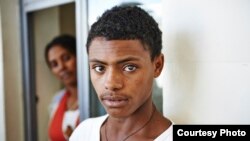2014 was a big year for the international NGO’s confederation known as “Light For the World” in terms of bringing hope of a better life to people in developing countries.
Working with partners and donors, the NGO has been able to save and restore eyesight, give children with disabilities access to education, and begin construction of a new clinic in Mozambique that will give two million people access to eye care.
Gabriela Sonnleitner, director of communications for Light for the World, says one of their biggest challenges for 2015 is to keep up the pace of their work.
“Our goal was to do 50,000 cataract operations in all of our focus countries, for example in Ethiopia, Mozambique, Burkina Faso, but also in northeast India and Pakistan, and I think we have succeeded. We have reached 50,000,” she explained. “This means that 50,000 people can see again. I think we are very happy we have reached this goal.”
For this year, one big goal will be completing the clinic being built in Beira, Mozambique.
“We will be able to educate medical staff, experts on eye care in Beira, and I hope we will be finishing the building by the end of the year,” said the communications director.
In Burkina Faso, Light for the World and its partners have implemented a project to educate children with disabilities.
“We want to bring disabled people to school and we focused on a district with 300,000 people, and we succeeded in having 55 schools being able to take on children with disabilities and I think this is a great success for us,” Sonnleitner said.
As the new year progresses, Sonnleitner emphasized, so will Light for the World’s efforts. One goal will be to implement the SAFE strategy, (Surgery; Antibiotics; Facial cleanliness and Environmental change) in all endemic areas of the Tigray region of Ethiopia. This is in keeping with a World Health Organization initiative to reduce the number of trachoma cases and eventually eradicate the infectious disease.
“The first 16 districts, we have now finished the financing and now we’re looking for the next districts to get the financing for this region,” said Sonnleitner.
Cataracts are the main cause of blindness in Ethiopia and Mozambique. The disease is also responsible for blindness in 20 million people worldwide.
Sonnleitner says Light for the World and its partners will remain focused on the treatment of cataracts as their main objective.










